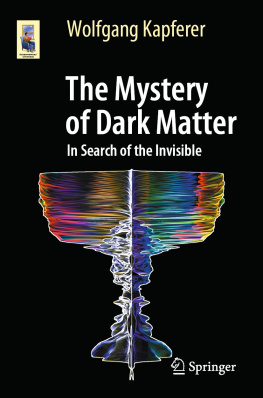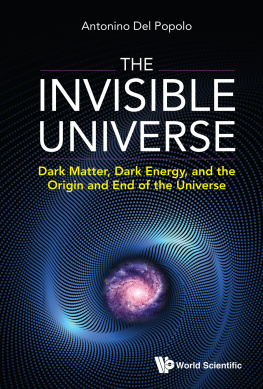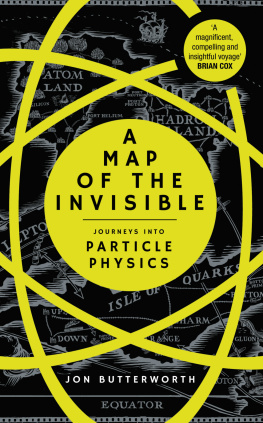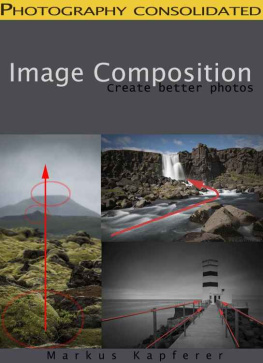Wolfgang Kapferer - The Mystery of Dark Matter In Search of the Invisible
Here you can read online Wolfgang Kapferer - The Mystery of Dark Matter In Search of the Invisible full text of the book (entire story) in english for free. Download pdf and epub, get meaning, cover and reviews about this ebook. year: 2021, genre: Children. Description of the work, (preface) as well as reviews are available. Best literature library LitArk.com created for fans of good reading and offers a wide selection of genres:
Romance novel
Science fiction
Adventure
Detective
Science
History
Home and family
Prose
Art
Politics
Computer
Non-fiction
Religion
Business
Children
Humor
Choose a favorite category and find really read worthwhile books. Enjoy immersion in the world of imagination, feel the emotions of the characters or learn something new for yourself, make an fascinating discovery.
- Book:The Mystery of Dark Matter In Search of the Invisible
- Author:
- Genre:
- Year:2021
- Rating:4 / 5
- Favourites:Add to favourites
- Your mark:
- 80
- 1
- 2
- 3
- 4
- 5
The Mystery of Dark Matter In Search of the Invisible: summary, description and annotation
We offer to read an annotation, description, summary or preface (depends on what the author of the book "The Mystery of Dark Matter In Search of the Invisible" wrote himself). If you haven't found the necessary information about the book — write in the comments, we will try to find it.
The Mystery of Dark Matter In Search of the Invisible — read online for free the complete book (whole text) full work
Below is the text of the book, divided by pages. System saving the place of the last page read, allows you to conveniently read the book "The Mystery of Dark Matter In Search of the Invisible" online for free, without having to search again every time where you left off. Put a bookmark, and you can go to the page where you finished reading at any time.
Font size:
Interval:
Bookmark:
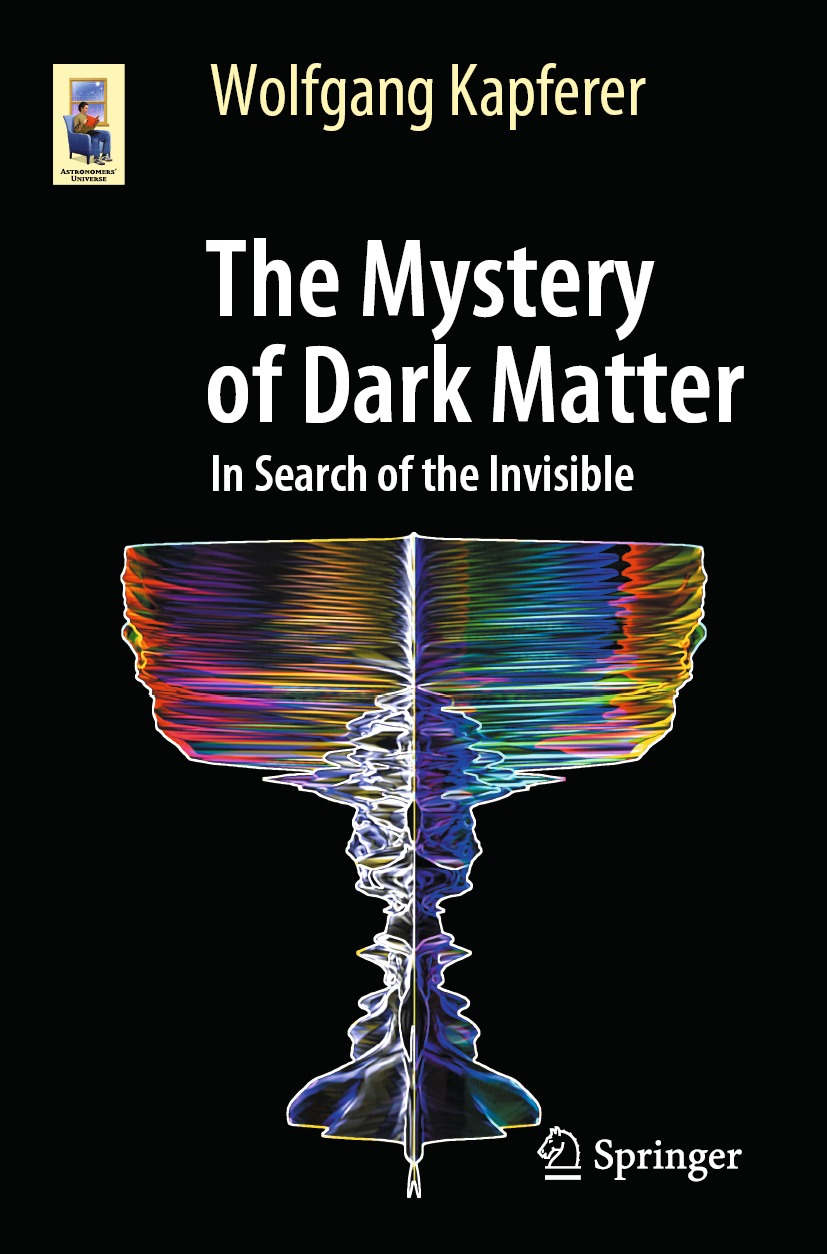
The Astronomers Universe series attracts scientifically curious readers with a passion for astronomy and its related fields. In this series, you will venture beyond the basics to gain a deeper understanding of the cosmosall from the comfort of your chair.
Our books cover any and all topics related to the scientific study of the Universe and our place in it, exploring discoveries and theories in areas ranging from cosmology and astrophysics to planetary science and astrobiology.
This series bridges the gap between very basic popular science books and higher-level textbooks, providing rigorous, yet digestible forays for the intrepid lay reader. It goes beyond a beginners level, introducing you to more complex concepts that will expand your knowledge of the cosmos. The books are written in a didactic and descriptive style, including basic mathematics where necessary.
More information about this series at http://www.springer.com/series/6960

Binding illustration: Wolfgang Kapferer
Responsible Editor: Lisa Edelhaeuser
This Springer imprint is published by the registered company Springer-Verlag GmbH, DE part of Springer Nature.
The registered company address is: Heidelberger Platz 3, 14197 Berlin, Germany
Today, the concept of dark matter has undergone an exciting two and a half centuries of history. From initially postulated dark stars to understand the strange movements of some luminaries on the firmament, to hypothetical planets in the outer reaches of our solar system, time and again it was possible to wrest matter from its darkness and, with advancing observation techniques, to discover its true nature.
At the beginning of the twentieth century however, a large gap regarding the masses of large-scale structures in the universe derived by various methods was discovered. The larger the structures, the greater the difference between masses derived from direct observations and masses derived from the dynamics of these objects. The successful conceptdark matterwas and is an approach to resolve this contradiction. It calls for an all-encompassing, purely gravitationally interacting substance in the universe, which is otherwiseat least until nowcompletely invisible. This concept of hidden matter that only reveals itself to us indirectly was and is very successful. A well known example of this is the theory of the formation and development of large-scale structures in the cosmos.
To the layman however, this concept often seems erratic and arbitrary. The aim of this book is, on the one hand, to show the great historical successes of the concept of dark matter in astronomy. The most important key observations in this field of research and their interpretations will be presented. These numerous observations have led to a world view in which our universe is mainly dominated by a form of matter as yet unknown to us. On the other hand, the potential candidates for dark matter are also presented, and the reader is familiarized with the great experiments in this highly topical field of research, the search for them and the most promising results to date.
The search for the nature of dark matter resembles a quest of the grail, transported into the modern age of the natural sciences. The book cover is dedicated to this parable. It shows the artistic visualization of a simulated galaxy rotation curve, which resembles a chalice when it is mirrored and rotated accordingly. In the course of the book, you will learn that galaxy rotation curves are among the central key observations for the phenomenon of dark matter and how laborious the search for a satisfactory answer to the question of the nature of this matter is. I hope you find this search as exciting as I do.
invisible,
mysterious,
dominant,
to be believed in,
These are all attributes that are difficult to combine with the methods of natural science. It quickly becomes clear that almost all large structures in the universe, such as galaxies, groups of galaxies and clusters of galaxies, predominantly consist of dark matter. And one learns in several treatises that no dark matter has yet been found directly on Earth or by space probes within our solar system. One reads that it must be a form of matter that hardly resembles the matter we are familiar with. It is so weakly interacting that it permeates every material in our world, almost without any sign of interaction with the elements we know. The adverb
Font size:
Interval:
Bookmark:
Similar books «The Mystery of Dark Matter In Search of the Invisible»
Look at similar books to The Mystery of Dark Matter In Search of the Invisible. We have selected literature similar in name and meaning in the hope of providing readers with more options to find new, interesting, not yet read works.
Discussion, reviews of the book The Mystery of Dark Matter In Search of the Invisible and just readers' own opinions. Leave your comments, write what you think about the work, its meaning or the main characters. Specify what exactly you liked and what you didn't like, and why you think so.

